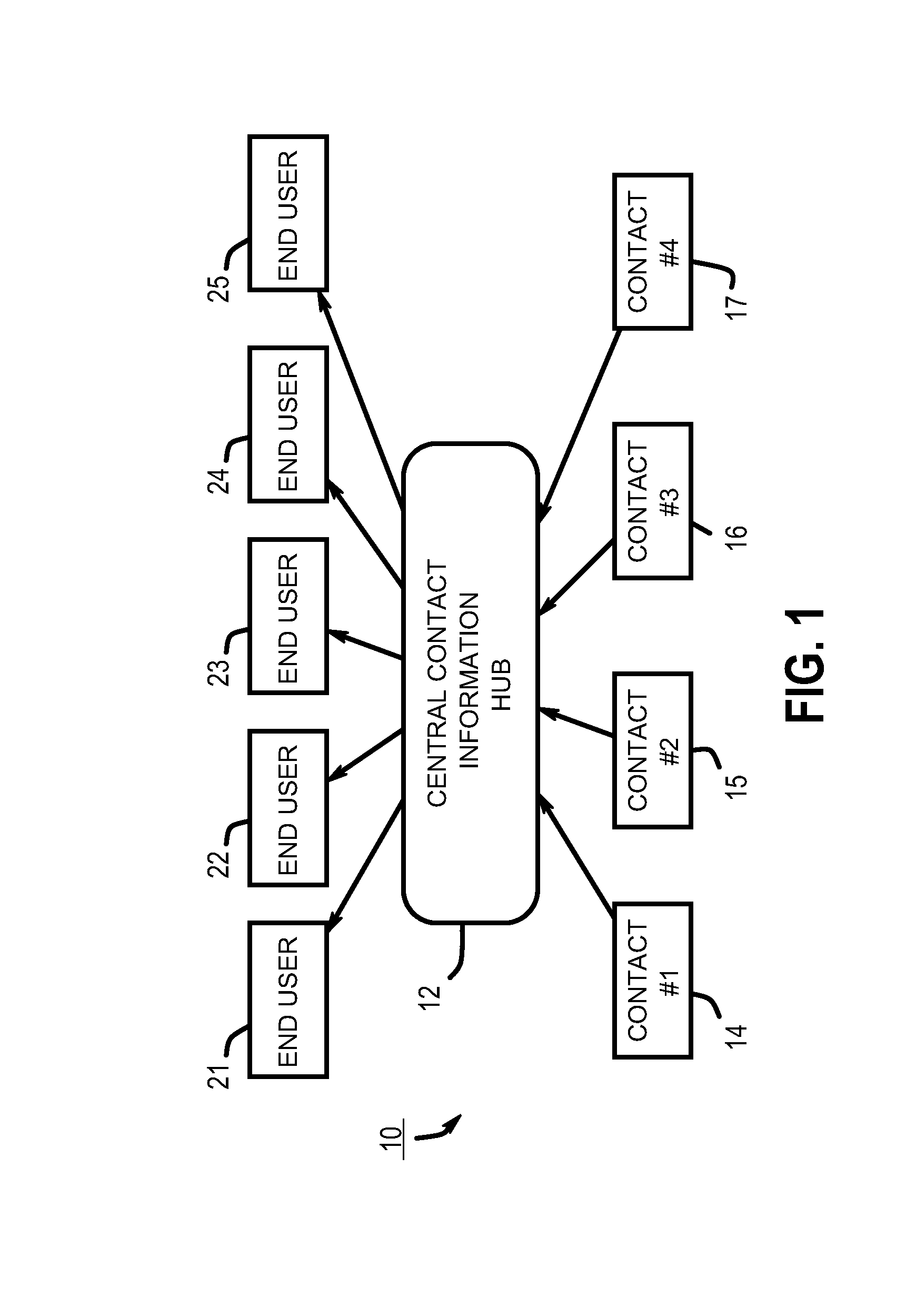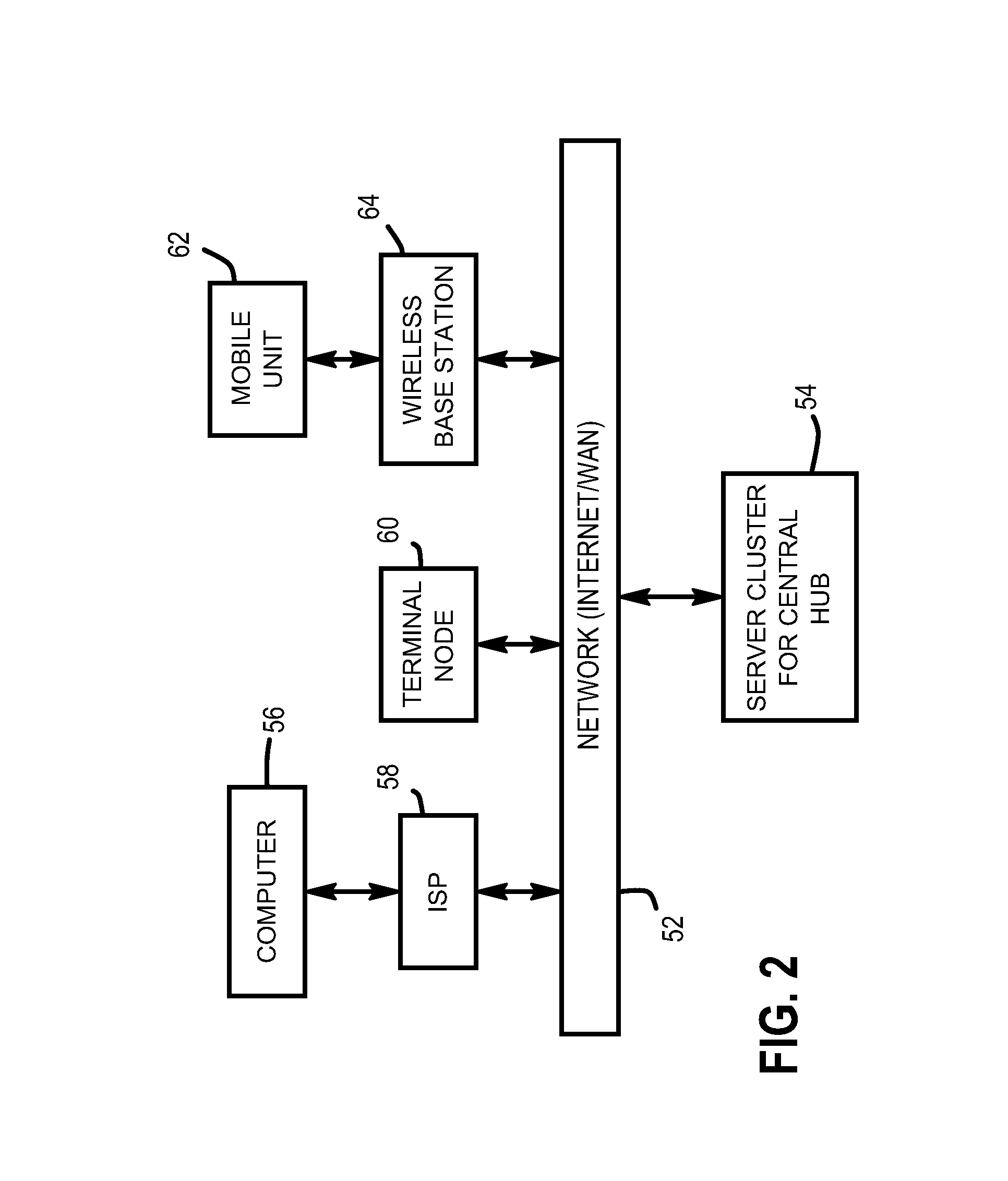Retrieving and storing updated contact records
a contact record and record technology, applied in the field of updating contact records, can solve the problems of limited email communication, expensive, and usually not very accurate, and achieve the effect of cost and difficulty of notifying
- Summary
- Abstract
- Description
- Claims
- Application Information
AI Technical Summary
Benefits of technology
Problems solved by technology
Method used
Image
Examples
first embodiment
[0174]In the first embodiment described in this section, it is assumed that end user 21 is utilizing a conventional PIM 208 that has no special functionality for communicating with hub 208. Accordingly, all such functionality is provided in stand-alone interface program 206. Thus, in this embodiment interfaces 230 and / or 250 are provided by stand-alone interface program 206. As described above, such interfaces allow for wide flexibility in specifying contact identification information, including the specification of unique identification codes or arbitrary search parameters. In addition, program 206 may include functionality for downloading contact identifiers from a portable device 202 and / or functionality for accepting scanned-in contact identifiers.
[0175]After end user 21 inputs the contact identifier information into such interface and clicks the corresponding “submit” button 234 or 254, program 206 causes such information to be transmitted to hub 12. In addition, program 206 pr...
second embodiment
[0182]In the second embodiment of the invention described in this section, all of the special-purpose functionality is included in PIM 204. Accordingly, no separate stand-alone program 206 is required. It is noted that PIM 204 might be provided by hub 12 or might be a conventional PIM that has been modified to include such functionality.
[0183]All of the functionality and processing options are the same in this embodiment of the invention as in the first embodiment described above. However, here, the user interface presented to end user 21 can be identical or nearly identical to the user interface that end user 21 is accustomed to seeing when working with his or her PIM 204. Of course, a separate stand-alone interface program 206 also might be constructed so as to provide such an interface that is identical or nearly identical to that provided by the PIM 208 with which it interfaces.
third embodiment
[0184]The above embodiments mostly contemplate user input of contact identifiers. In this embodiment of the invention, the end user 21 is provided with an electronic link to the contact identifier. For instance, contact 14 might include in an e-mail message to end user 21 a generic “link”. Similarly, contact 14 might include a similar link in contact 14's Web page or other electronic document. Preferably, this “link” is in the form of a file that includes the (or a) unique assigned identification code for contact 14, that is in a format which is unique to hub 12 (referred to herein as file type .h12), and that has been provided to contact 14 by hub 12.
[0185]When the interface program used by end user 21 (e.g., PIM 204 or the stand-alone interface program 206) is installed in this embodiment of the invention, an association preferably is created such that file type .h12 is opened by such program. Thus, when end user 21 receives an e-mail message or views a Web page that includes such...
PUM
 Login to View More
Login to View More Abstract
Description
Claims
Application Information
 Login to View More
Login to View More - R&D
- Intellectual Property
- Life Sciences
- Materials
- Tech Scout
- Unparalleled Data Quality
- Higher Quality Content
- 60% Fewer Hallucinations
Browse by: Latest US Patents, China's latest patents, Technical Efficacy Thesaurus, Application Domain, Technology Topic, Popular Technical Reports.
© 2025 PatSnap. All rights reserved.Legal|Privacy policy|Modern Slavery Act Transparency Statement|Sitemap|About US| Contact US: help@patsnap.com



